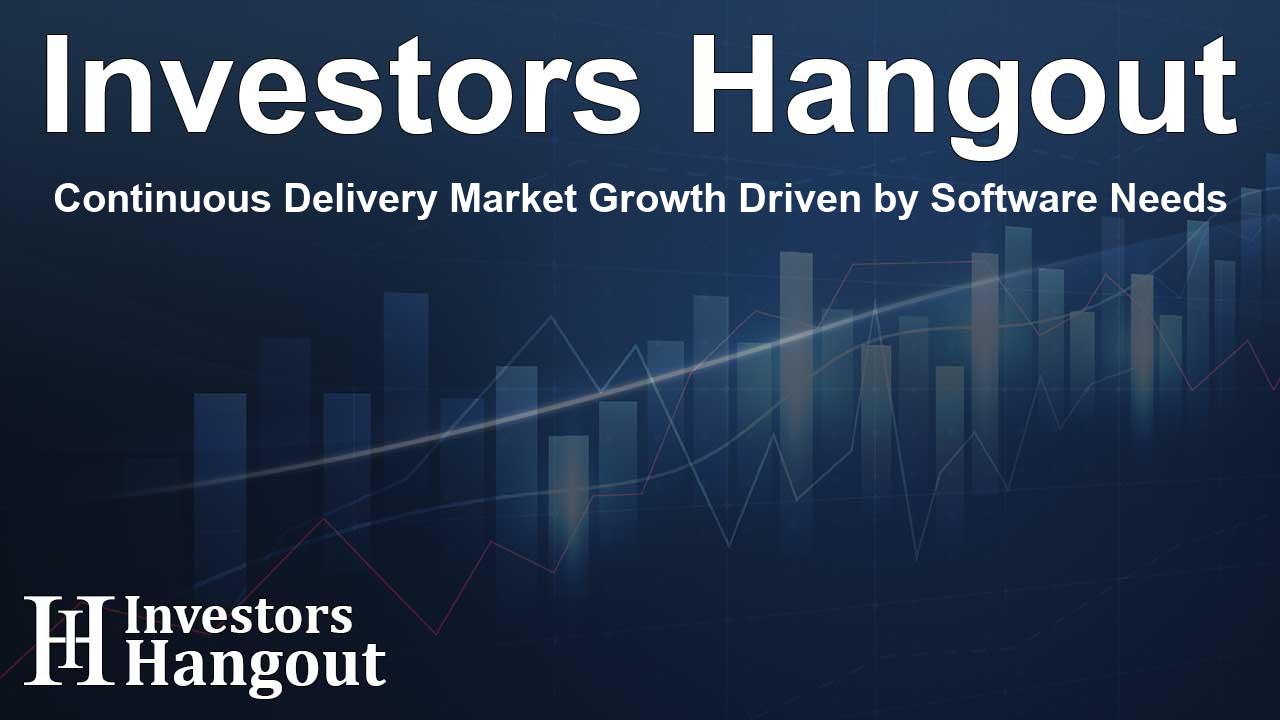Continuous Delivery Market Growth Driven by Software Needs

Understanding the Continuous Delivery Market
The Continuous Delivery market is on a significant growth trajectory, projected to soar to USD 16.9 billion in the upcoming years. By 2023, the market was valued at USD 3.7 billion, with a remarkable growth rate anticipated at a compound annual growth rate (CAGR) of 18.55% from 2024 to 2032.
Why Continuous Delivery Matters
Continuous Delivery (CD) is essential in today’s software landscape, where both speed and reliability are critical. The demand for fast and seamless software deployment is constantly rising, which is compelling organizations to adopt innovative Continuous Integration and Delivery (CI/CD) tools and methodologies. With the growing complexities of software applications, maintaining a steady flow of updates and deployments has become a necessity for competitive survival.
Major Players in the Continuous Delivery Landscape
An impressive lineup of major players dominates the Continuous Delivery market. Companies like Amazon Web Services (AWS) with its CodePipeline, Microsoft with Azure DevOps, and Google through Google Cloud Build are leading the way. These platforms provide comprehensive tools that empower developers to deliver software rapidly and efficiently.
Emerging Competitors
Besides the giants, numerous providers are making waves, such as GitLab, Jenkins, and CircleCI. Firms like these specialize in CI/CD solutions tailored to specific industries and business sizes, showcasing the diversity of options available to organizations.
Market Insights and Trends
The anticipated shift towards cloud-based solutions is one of the standout trends, with the cloud segment dominating the market due to its benefits in scalability and lower infrastructure costs. It accounted for over 67% of the market revenue in 2023. Organizations are swiftly moving towards cloud deployment, attracted by its advantages, including automated pipeline support and minimal downtimes.
On-Premise Segment Growth
While the cloud segment leads the way, on-premise solutions are gaining traction, especially in sectors with stringent security needs, such as banking and healthcare. These solutions provide companies with the ability to control their environments, ensuring compliance with the stringent regulatory frameworks governing their operations.
Growth by Enterprise Size
Large enterprises are the dominant force in the Continuous Delivery market, leveraging their extensive IT budgets to implement advanced CI/CD practices. These organizations are at the forefront of integrating CD tools into their development pipelines, ensuring rapid product innovation and operational efficiency.
Opportunities for SMEs
Conversely, small and medium enterprises (SMEs) are set to grow at a significantly higher rate. The flexibility and affordability of cloud-based CD solutions attract many SMEs, enabling them to enhance their development processes and compete effectively with larger players. Their increasing focus on improving time-to-market through effective software delivery processes is noteworthy.
Sector-Specific Insights
The BFSI sector continues to lead the market, demonstrating a considerable reliance on secure software delivery methods. Continuous delivery tools allow financial institutions to adopt agile practices, facilitating faster responses to market changes while maintaining compliance.
Education Sector Dynamics
Interestingly, the education sector is emerging as one of the fastest-growing areas for Continuous Delivery tools. Institutes are rapidly transitioning to digital platforms, increasing their reliance on software that supports e-learning and student management systems. This demand fosters growth in CD tools tailored for educational use.
Regional Market Analysis
Geographically, North America holds the largest share of the Continuous Delivery market, representing more than 37% of the revenue in 2023. This growth is largely attributed to the early adoption of CD practices among tech giants and a robust digital infrastructure.
Expanding in Asia-Pacific
On the other hand, the Asia-Pacific region is expected to experience the fastest growth. The surge in digitalization and cloud adoption, particularly in countries like India and China, is significantly boosting the demand for CD methodologies and technologies.
Recent Market Developments
Innovation remains a hallmark of this industry, as showcased by recent advancements. Companies such as GitLab are enhancing their offerings with AI-powered features, while Microsoft is improving its Azure DevOps platform's functionality through improved integrations. Such developments reflect a trend towards increased automation and enhanced capabilities in Continuous Delivery solutions.
Conclusion: Driving the Future of Software Deployment
The Continuous Delivery market is not merely an emerging sector; it's a vital component in the evolution of software development and deployment. As demands for rapid delivery without sacrificing quality continue to grow, companies engaged in this space must stay agile, innovate continuously, and adapt to changing technological landscapes to remain competitive.
Frequently Asked Questions
What is the projected size of the Continuous Delivery market by 2032?
The Continuous Delivery market is expected to reach USD 16.9 billion by 2032.
Which sectors are driving the growth of Continuous Delivery?
The BFSI and education sectors are particularly influential in driving market growth due to their increasing reliance on software for operational efficiencies.
What technological advancements are influencing the Continuous Delivery market?
Technological advancements such as AI integration, automation, and increased cloud adoption are significantly shaping the Continuous Delivery landscape.
How can SMEs benefit from Continuous Delivery?
SMEs can leverage affordable cloud-based Continuous Delivery solutions to enhance their development processes and compete effectively.
What regions are expected to see the fastest growth in Continuous Delivery?
Asia-Pacific is anticipated to experience the fastest growth due to rapid digitalization and cloud adoption.
About The Author
Contact Dylan Bailey privately here. Or send an email with ATTN: Dylan Bailey as the subject to contact@investorshangout.com.
About Investors Hangout
Investors Hangout is a leading online stock forum for financial discussion and learning, offering a wide range of free tools and resources. It draws in traders of all levels, who exchange market knowledge, investigate trading tactics, and keep an eye on industry developments in real time. Featuring financial articles, stock message boards, quotes, charts, company profiles, and live news updates. Through cooperative learning and a wealth of informational resources, it helps users from novices creating their first portfolios to experts honing their techniques. Join Investors Hangout today: https://investorshangout.com/
The content of this article is based on factual, publicly available information and does not represent legal, financial, or investment advice. Investors Hangout does not offer financial advice, and the author is not a licensed financial advisor. Consult a qualified advisor before making any financial or investment decisions based on this article. This article should not be considered advice to purchase, sell, or hold any securities or other investments. If any of the material provided here is inaccurate, please contact us for corrections.
